Thuja western "Golden Globe": description and cultivation
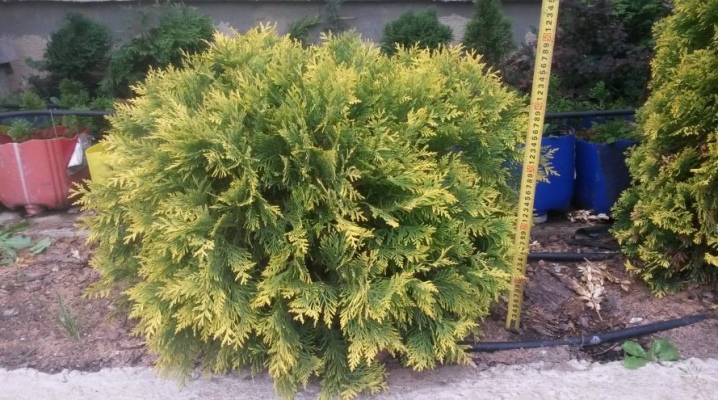
Evergreen trees and shrubs have traditionally attracted the attention of a large number of people. Thu "Golden Globe" is deservedly considered a good example of such plants. Even novice gardeners and those wishing to independently arrange their adjoining space will cope with this plant - you just need to know the maximum of the nuances.
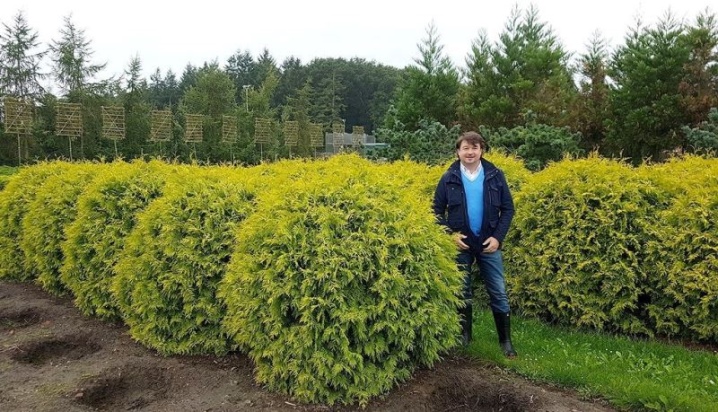
Description
Western thuja "Golden Globe" is famous for its unpretentiousness and small crown size. These properties have made it desirable for both amateurs and seasoned landscape designers. Bright needles, colored outside the box, makes this plant suitable for:
- for giving;
- for a country house;
- for a city street;
- for the park;
- for container gardening of a terrace, roof, and other places.
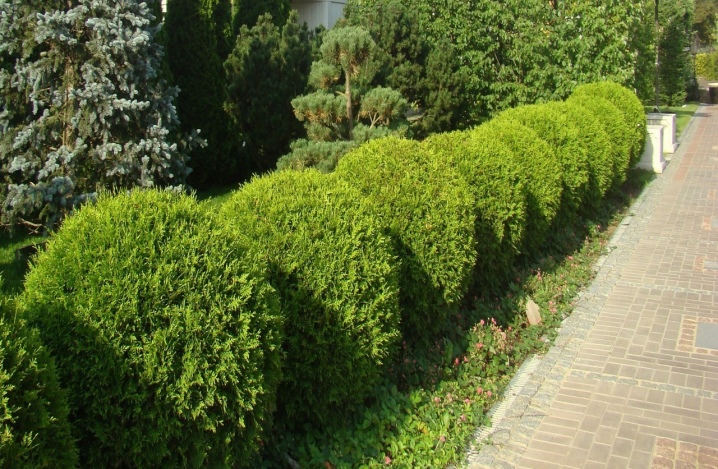
The dwarf variety gives a modest annual growth rate. But you can safely expect that the territory will look bright, regardless of the season. The positive features of the plant are:
- no need for constant attention;
- the ability to maintain a spherical crown even with infrequent haircuts;
- the ability to develop with limited care;
- pronounced decorativeness;
- invariability of the geometry of the crown during the entire development period;
- covering the ends of the branches with yellow needles;
- high probability of rooting after planting.
The description of the thuja of this variety shows that the superficial needles with the onset of autumn acquire, instead of yellowish, a brown-red, as if copper, color. In the next growing season, the original attractive colors return. But this only happens if the tree is immediately planted according to all the rules.
Thuja loves light, and when placed in the shade, it quickly loses its original color. In this case, the crown becomes not dense enough and loses its natural shape.
Thuja should be planted in sunny or partially shaded places. In this case, care should be taken to cover the plant from cold winds. The largest size of an adult tree is gaining by 15 or 20 years. At this point, the crown grows to 1-1.2 m. The crown diameter exactly matches the growth of the trunk.
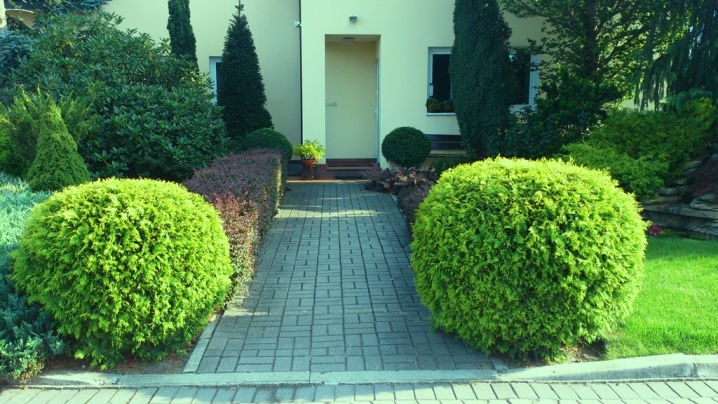
The attractive condition of a plant at any age is determined by the quality of the soil. It should have a loose structure. It is required that the soil contains a sufficient amount of nutrients. At the same time, any stagnation of water (both precipitation and groundwater, and melt liquids) is unacceptable. It is advisable to choose areas composed of loam or improved sandy loam; soils of greater density will have to be improved with the addition of peat and sand.
How to plant?
This moment is no less important than the landing site. Experts advise planting thuja, like other coniferous crops, in spring or early autumn. It is necessary to carefully look at this so that the earth has time to warm up or does not have time to cool down.
Landing pits are prepared in advance. They are made so that the entire root complex is placed inside.
Most nurseries sell plants 2 to 4 years old. They can be grown in holes with a depth of 0.6 to 0.8 m. The diameter roughly coincides with the depth, horticultural intuition and experience will tell you more accurate numbers. Then you have to:
- lay drainage on the base of the pit:
- mix the planting soil (if it is not fertile enough) with sand, garden soil and peat;
- add fertilizer.
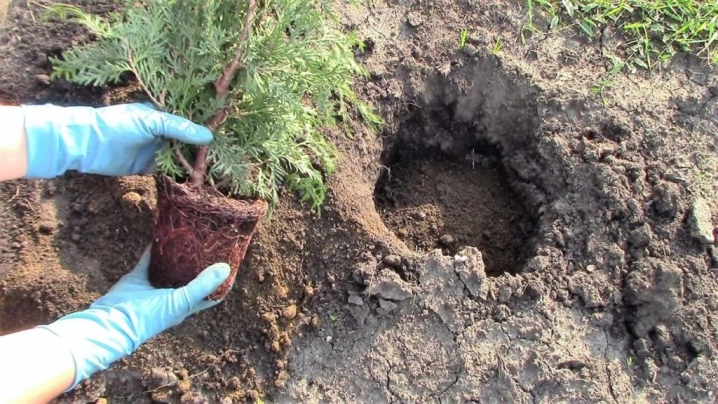
In order for the Golden Globe thuja to start well and grow actively, you need to put a mixed fertilizer for conifers. It is used in an amount of 0.05-0.06 kg per plant. But organic compounds should not be used. Fresh manure and bird droppings are especially dangerous. Under the influence of strong nitrogen, sharply unfavorable phenomena can occur:
- burn or even death of the roots;
- damage to pests;
- the appearance of bacterial rot;
- fungal decay.
Shrubs must be placed so as to exclude entanglement of the roots. Root collars must not be buried. Once the plant has been planted, it is diligently watered. The circles near the trunk are covered with peat or other material. This mulch is allowed to prevent abnormal evaporation of water from the soil.
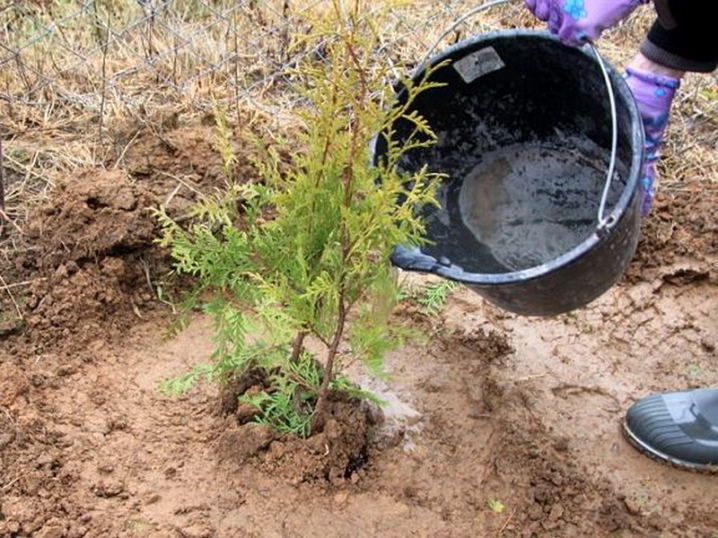
For the planting itself, you can use both ready-made seedlings and seeds. The second option is best suited when organizing hedges. We'll have to collect the grown cones in the autumn months. They are kept warm for 3 to 5 days (if necessary, they wait for opening). The spilled seeds are sown in a box where the nutrient soil for conifers was previously loaded; the box should be kept in the shade, waiting for the shoots to appear.
Correct care
So that the planted thuja is guaranteed to take root, required:
- water it regularly;
- protect against weeds by ruthless weeding;
- loosen and remove the crust formed after irrigation (with the greatest depth of 0.08-0.1 m).

When intense heat sets in, sprinkling is urgently required. Intensive watering is carried out in the autumn months before the onset of winter. This will allow you to more effectively prepare the plant for the cold season, prevent drying out in December-April. Mulch is supplemented with spruce branches. It is laid out not only on the trunk space, but also on top of the crown.
This measure allows:
- weaken the harmful effects of frost and early frost;
- exclude the attack of rodents;
- prevent spring burns.
In the cold season, the crown is tied up and covered with snow completely.
Golden Globe is calmly going through a haircut. It is best to carry out this manipulation with the onset of weather spring. The shrub will have to be cut for both sanitary purposes and to improve aesthetic properties. On the plant, where the edges of the shoots are cut off, vigorous tillering begins.
Important: it is unacceptable to remove everything that has grown on the plant over the past year. The wood outcrop of the previous season, eliminating the waiting buds, will not allow the resumed development of the cut off crown fragment.
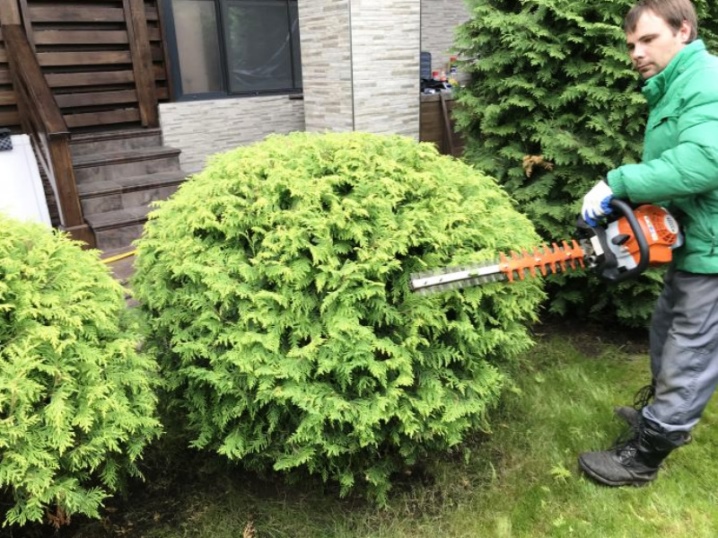
With a combination of a correctly selected location and a rational approach, thuja can please people for years. Golden thuja give excellent results when shaping live borders. But it is very easy to care for plantings in the tapeworm format.
The acidity of the soil does not really matter. Liming the earth, as well as the use of mineral fertilizers in excess of the initial filling, is not required. However, the soil will have to be kept fresh and hydrated. Since the root system is only partially buried (most of the roots grow from above, close to the ground), the plant can only survive a short drought. It is strictly forbidden to pour thuja - in this case, the roots may rot.
For your information: the soil around the thuja should continuously keep a little moisture. When growing a plant on insufficiently fertile land, a deficiency of potassium and calcium may be felt. It provokes shedding of needles. The ideal solution to the problem will be top dressing tested over decades - crushed shells, cleaned ash. The introduction of organic additives is allowed both for the prevention of deficiency of nutrients and for eliminating its consequences.
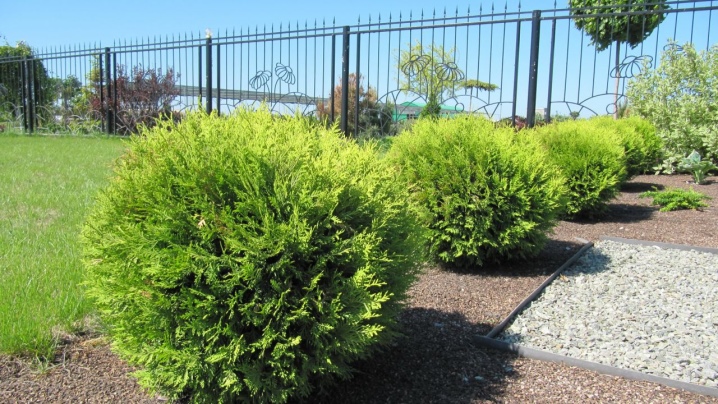
Diseases and pests
Golden Globe may suffer from:
- bark beetles;
- thuja aphids;
- spider mites.
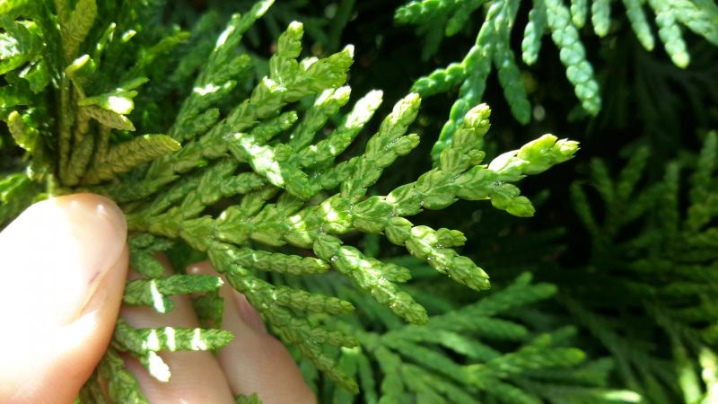
You can fight them using well-known insecticides.Of course, you should strictly follow the instructions and especially the precautions. The invasion of beetles and beetles can also cause serious consequences. The larvae of these insects, once in fertile soil, destroy the roots extremely quickly. To combat beetles and larvae, the trunks and necks of the roots are treated with imidacloprid derivatives.
After the first treatment with such preparations, they wait from 40 to 50 days, then the repeated treatment is carried out. Only in exceptional cases, with firm confidence in the absence of insects, can it be abandoned. It is also necessary to carry out the prevention of fungal infections. For this, aqueous solutions of fungicides are used.
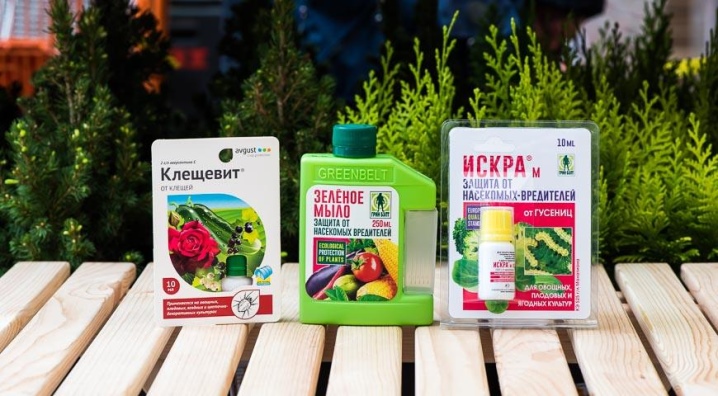
Important: you should strictly follow the instructions when diluting and spraying drugs.
Application in landscape design
Golden Globe can be used to decorate the landscape in both group and single formats. But in any case, overcrowding of the landing should be excluded and the proper space should be provided. A good combination for this variety of thuja will be conifers with dark green needles. You just have to alternate areas of vegetation of different colors. Paired shrubs are mainly planted to the right and left of:
- gate on the site;
- dominant small form;
- the porch of a modest house;
- front entrance to a cottage or mansion.
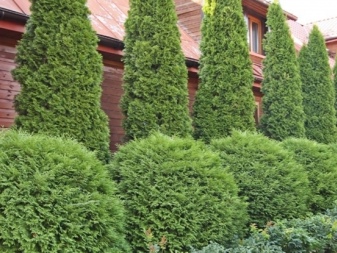
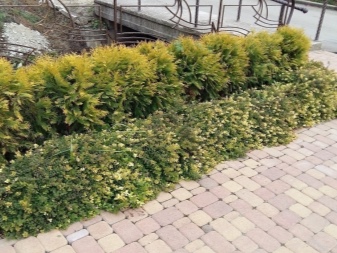
Summer residents mainly use the "golden ball" as part of hedges. In this case, thuja is combined with other evergreens. Planting with a continuous wall or leaving a gap for deciduous shrubs and trees is at the discretion of the owners. The second option can look beautiful and unusual in the fall. The contrast between the changing color of the leaves and the permanently colored needles creates an exceptional impression.
Experts believe that "Golden Globe" is poorly combined with shrubs, the crown of which is extended upwards. Other spherical bushes will be the best companions.
Important: they should have approximately the same width and height dimensions. Western thuja can be used in combination with mixborder floral ensembles. They will look good in the winter garden too.
For information on how to properly care for the western thuja "Golden Globe", see the next video.



































































The comment was sent successfully.